Shopping: the art of the invitation
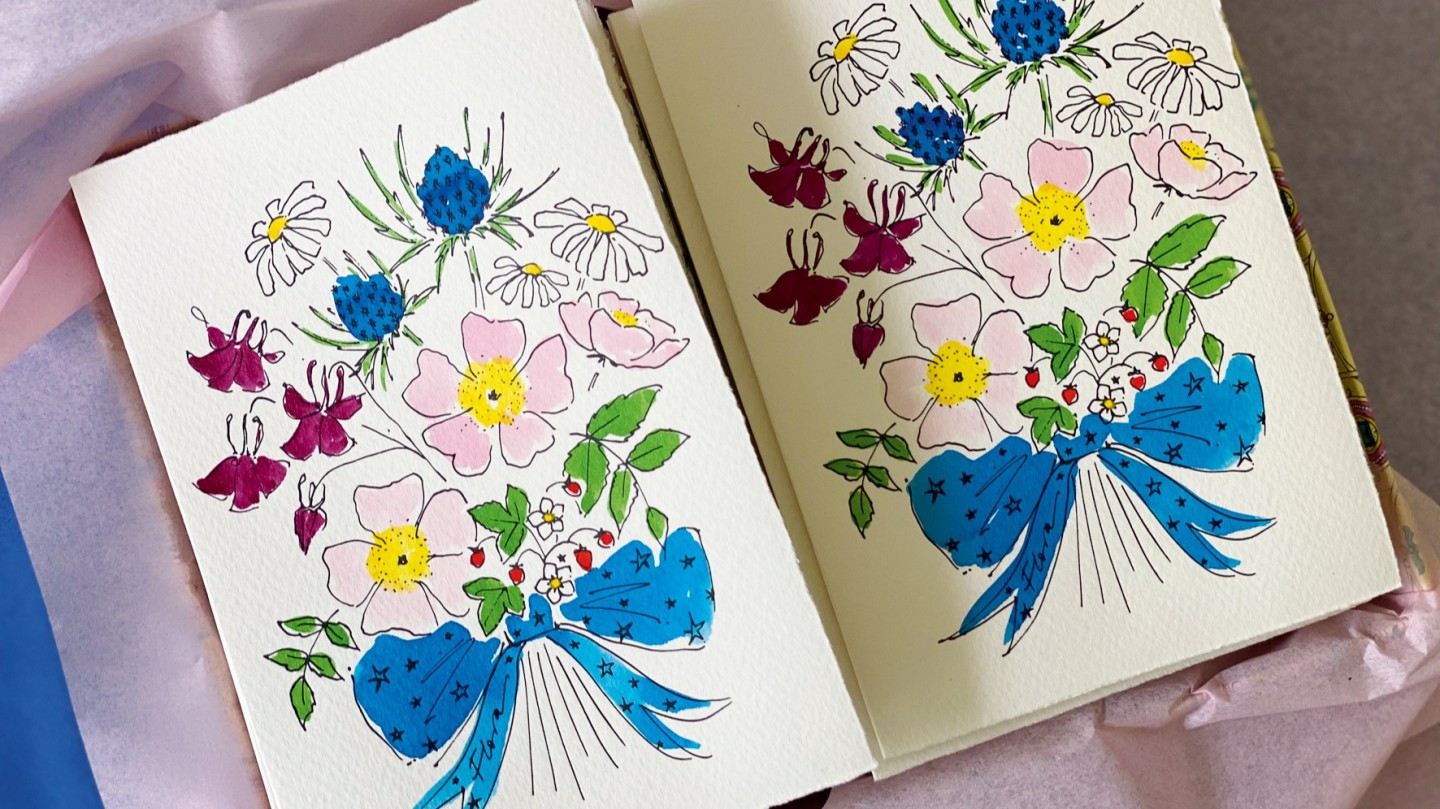
Simply sign up to the Style myFT Digest -- delivered directly to your inbox.
When accessories designer Charlotte Dellal turned 40 in June, the easing of Britain’s lockdown highlighted one thing in particular: a party was in order. Hosted a month later in a ritzy marquee, the Orient Express-themed party was typical of a designer prone to maximalism. “I wanted to set a glamorous scene for a celebration at home in the countryside,” says Dellal, whose elegant afterparties have earned a lavish reputation on the fashion-week circuit. Her secret? Artist-designed invitations, the bespoke answer to personalised stationery.
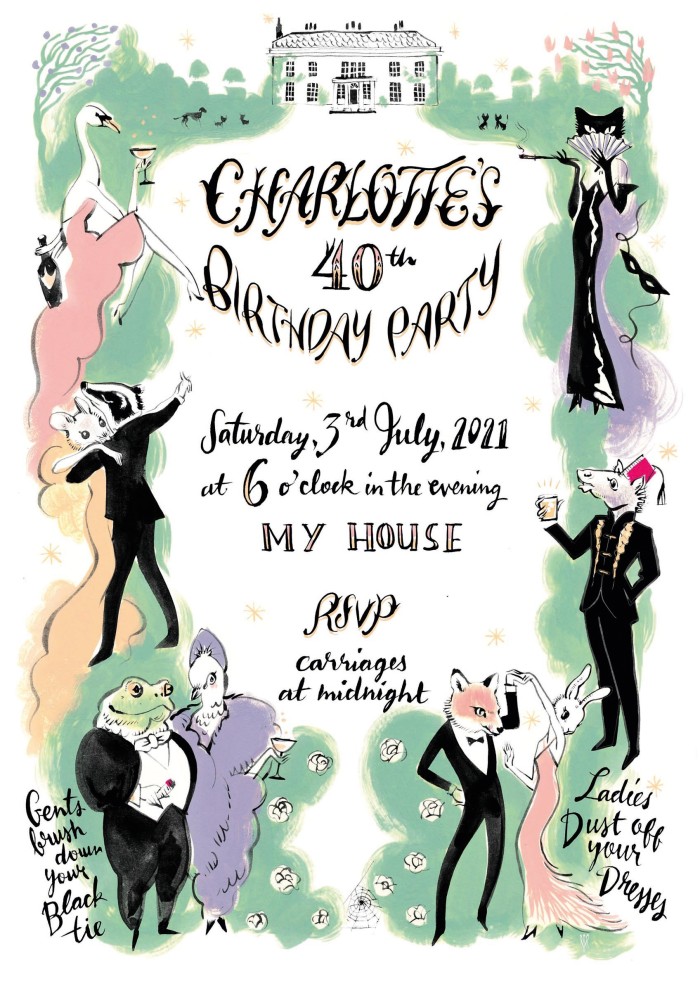
Dellal’s go-to illustrator is Adèle Mildred, a Franco-American artist and milliner whose clients include Burberry and Dita Von Teese. Inspired by the golden age of illustration, which roughly spanned the 1880s to 1920s, Mildred sketches, paints and inks every detail by hand before scanning and layering her designs digitally – right down to the background layers of gouache. (Digital copies also allow artists to be commissioned internationally.) Many of her works depict mischievous characters: the design for Dellal’s 40th involved creating a cast of impeccably dressed animals – “a bit like The Wind in the Willows meets The Great Gatsby”. Her own 40th invitation was fronted by a horned burlesque dancer to accompany a “wildly inappropriate” hell-themed bash at the Rivoli Ballroom. Dress code: red or dead.
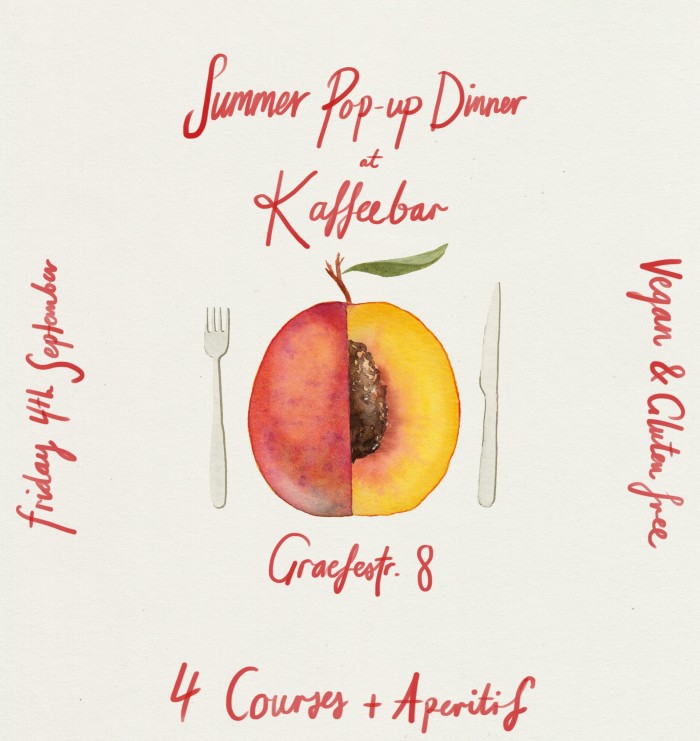
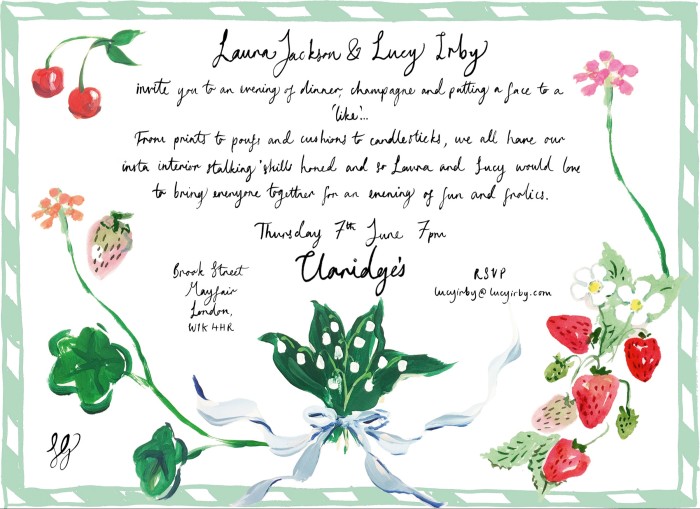
Lockdown triggered a boom in custom stationery, with brands such as Papier reporting a 300 per cent increase in sales; artist-designed invitations are carrying that momentum towards a new age of festivities. Indeed, for PR director Lucy Irby, a regular commissioner of bespoke stationery, “a party begins with the invitation. From the moment you open it, you’re on the journey.” Her favourite designs are those that tease details ahead of an event: for an early summer dinner at Claridge’s, artist Susannah Garrod created a watercolour of blossoms and berries, a design echoed in a display of potted young strawberry plants. Another saw illustrator and ceramicist Polly Fern commissioned to match the menus with seasonal blooms by florist Kitten Grayson. “There’s got to be a synergy,” adds Irby.
Also crucial, says Dellal, is the quality of materials. “If you go to the effort of having a design made, how it is printed is very important,” she explains. Paper must have the right weight and texture – Dellal recommends Mayfair’s Mount Street Printers – and inks should be anti-fade. Scribble & Daub’s Caroline Kent uses dye-based inks by traditional makers such as Dr Ph Martin’s and Winsor & Newton to create her desired finish, a process achieved almost entirely by hand. “Everything is letterpress-printed at our workshop from original dip pen and ink drawings,” says Kent. “Then the finished pieces are individually hand-coloured in the studio.”
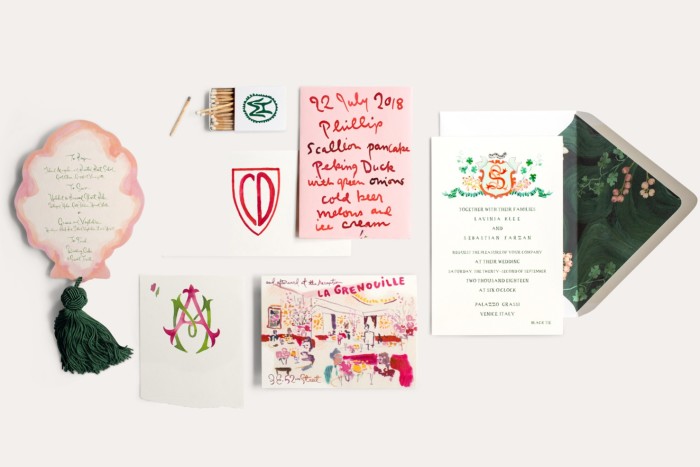
Of course, as Laura Jackson, founder of supper club and lifestyle brand Hoste, points out, the most eco-friendly way of creating invitations is to avoid printing them at all. “I still get excited about receiving something beautiful digitally,” she says, pointing to seeded paper and biodegradable stickers for those who don’t want to lose physical copies. Jackson enjoys working with artists who aren’t traditional stationery designers: she discovered Berlin-based Elliot Beaumont through his work for beauty brand Rowse. American artist Alphachanneling, another favourite, is best known for his “utopian erotic” drawings and prints.
Executed correctly, an invitation can become a memento: “If an invitation or menu finds its way onto a mantelpiece or even a frame,” says Kent, “then your event will stay in hearts and minds long after the last sip of champagne.” It’s a similar story for Shrimps designer Hannah Weiland, who has worked with artists including Faye Wei Wei and Fee Greening. “Invitations can be a small art form in themselves – a tiny canvas,” she says. Less conventional hosts might look to the origami-style folded designs by Dutch illustrator Rosa de Weerd: trickier to display, but still valuable keepsakes.
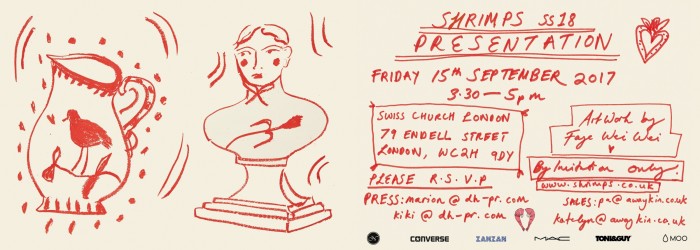
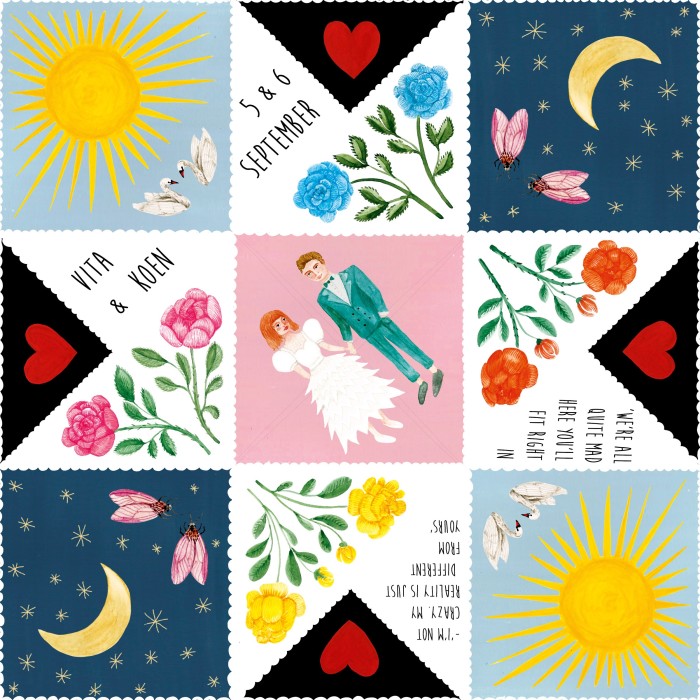
And while plenty of hosts prefer their invitations pristine, there’s a growing trend for smudges and ink blots. For Kent, it’s part of the magic: “People instinctively respond to hand-drawn lines and painted marks,” she says. Bespoke invitations can reveal as much about an artist as they can an event. Beaumont often leaves unconsciously drawn scribbles on his work, as does artist Sophie Harpley, another of Jackson’s collaborators, who specialises in delicate, painterly flowers. “One of the reasons I paint is for the love of imperfection – visible brushstrokes and a handmade, human feeling,” she says.
The authentic mood is in keeping with a more personal style of celebrating. “People are creating more intimate, thoughtful occasions,” says Harpley. “They want to savour every element of getting together.” And after months of postponed events, hosting a party feels like the ultimate expression of generosity. New York-based artist Happy Menocal is particularly excited about the return to revelling – and not just because of the uptick in business. “There is a renewed sense of gratitude around gathering now,” she says. “The sight of my own name on a seating card at a wedding this summer nearly brought tears to my eyes: yes, that’s me! I am here! Table two.”
Comments